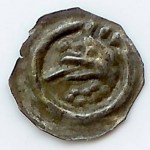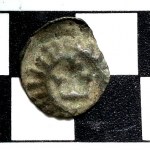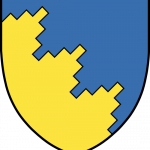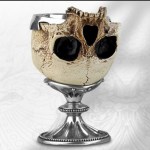History
Regular readers know that I’ve been a big Star Trek geek (more or less) ever since I first discovered reruns of the original Star Trek episodes in the 1970s, having been too young (but not by much!) to have caught the show during its original 1966-1969 run. True, my interest waxed and waned through the years—for instance, I loved Star Trek: The Next Generation, while Star Trek: Enterprise and Star Trek: Voyager pretty much left me cold—but even now I still find myself liking the rebooted movie series. In the original series, my favorite characters tended to alternate between Spock, the Vulcan…
About five weeks ago a month ago, I finally wrote the post I had been promising to write for months before about medical marijuana. At the time, I also promised that there would be follow-up posts. Like Dug the Dog seeing a squirrel, I kept running into other topics that kept me from revisiting the topic. However, recently the New York Times gave me just the little nudge I needed to come back and revisit the topic, first by openly advocating the legalization of marijuana, then by vastly overstating the potential medical benefits of pot (compare the NYT coverage with my post from last month…
Deep in a single square metre of trench D at Landsjö castle, on the inner edge of the dry moat, we found five identical coins. Boy are they ugly. They're thin, brittle, made of a heavily debased silver alloy and struck only from one side; they bear no legend and the image at the centre is incomprehensible. But I love them anyway, because they offer a tight date: this coin type was struck for King Valdemar Birgersson c. 1250-75. And the first written mention of Landsjö dates from 1280, so it all works out.
Valdemar became king because he had an extremely powerful and ruthless father, the jarl…
A fun thing about historical archaeology, the archaeological study of areas and periods with abundant indigenous written documentation, is when the archaeology challenges the written record.
According to the patchily preserved historical sources, Landsjö hamlet was a seat of the high nobility in about 1280 but then became tenant farms no later than 1340. This means that the castle on Landsjö islet was probably in good defensible shape and inhabited in 1280 but not after 1340.
During last week's excavations we found a previously unknown strong wall delimiting the castle's high inner bailey,…
Sweden doesn't have much of a written record for the Viking Period. We have most of the rune stones but hardly any of the sagas. And thus among Swedish Viking scholars it is not uncommon to be rather poorly read, like I am, in the eddas, the sagas and the other written sources of the period. The Viking Period is pretty much prehistoric archaeology to us.
Still, even in Sweden you can't study the period without picking up a few fragments of the written lore. And in my reading, one of the best passages I've come across is this description of Viga-Glum's reaction to trespassing neighbours from…
My excavations this summer will target the ruins of two Medieval castles near Norrköping. Christian Lovén and I have selected these two because unusually, both have curtain walls (Sw. ringmur) but do not seem to have belonged to the Crown. The High Middle Ages in Sweden are poorly documented in surviving written sources, but in one of these cases we actually have a pretty good idea who built the castle and when.
Landsjö in Kimstad parish enters the record in about 1280 when an old woman writes her will. She's Kristina, daughter of a certain Faste who had borne a plant device on his coat of…
Back in 2012 we had a look at the first novel written in Swedish, 1666/68's Stratonice by Urban Hiärne (1641-1724). He went on to become a high-ranking doctor, founded a hydrotherapeutic spa resort, was instrumental in putting an end to the Swedish witch hunts and fathered 26 children by his three wives. But before all this, at the suggestion of professor Olof Rudbeckius Sr., he also found time to write the first original play performed in Swedish: Rosimunda. This was student theatre, with a cast of young noblemen, put on to entertain the 11-y-o future king Carolus XI at Uppsala Castle on 15…
I hadn't really planned on writing again about everyone's favorite conspiracy theorist and promoter of quackery, Mike Adams, at least not so soon after the last time I did it, which was only last week after Adams appeared on Dr. Oz's daytime television show to push his "laboratory." Adams, as you might recall, goes by the Internet moniker the "Health Ranger" (which would really more appropriately be "Health Danger") and is the man responsible for one of the quackiest sites on the Internet, NaturalNews.com, a repository for nearly every form of medical pseudoscience known to humans, mixed in…
A week ago or so, I was perusing my Google Alerts, along with various blogs and news websites, looking for something to blog about, when I noticed a disturbance in the pseudoscience Force. It's a phenomenon I've noticed many times before from a wide variety of cranks and quacks, but it all boils down to how we as supporters of science-based medicine are viewed by those who are, in essence, victims of the quackery that we are trying to combat. I think it's a topic worth revisiting periodically; so here's the 2014 update.
A week ago, Sharon Hill published a post over at Doubtful News entitled…
The 12-15th centuries are reckoned as Sweden's Middle Ages. Politically, it was a highly volatile period, where the average tenure of a ruler was less than 11 years. One trait that can look modern to a present-day observer is that some of these tenures were divided up into several separate terms interleaved by other rulers. The man who managed most terms – four of them – was Karl Knutsson.
Karl was born in 1408/9 and first ruled Sweden/Finland from age 29/30, becoming elected Steward of the Realm in 1438 after taking part in Engelbrekt Engelbrektsson's uprising against the king of the…
I thought I'd include a picture of the young Charles Darwin, since we are celebrating his birthday today. That's him in 1816, when he was 6 or 7 years old, with his younger sister, Emily Catherine Darwin. And then I started wondering about that other person in the picture. Darwin's sisters were an extremely important influence on his life, and I don't know a heck of a lot about her; Darwin had four sisters and one brother, Erasmus, and most of the biographies say quite a bit about the older brother who preceded him to university, but the sisters seem to be background noise. It seems…
Some capsule reviews of books I've finished over the last little while, in the spirit of catching up.
van Grouw, Katrina. The Unfeathered Bird. Princeton: Princeton University Press, 2013. 304pp. ISBN-13: 978-0691151342
This is a seriously beautiful coffee table-sized scientific illustrations book on birds. Basically the idea of the book is to explore birds through drawings mostly of whole or partial skeletons but also some of musculature and "plucked" bodies. A bit odd, a bit creepy but breath-taking. The book opens with a very general section on what birds have in common and then goes into…
Somebody tipped over a bag full of a white powdery substance. Most of what fell out splayed across the dirty wooden table, but about a cup poured onto the dirt floor of the open-air Baraza at our research site in a remote part of the Congo’s Ituri Forest. Embarrassed about tipping onto the ground more of this valuable substance than most people living within 50 kilometers would ever see in one day, the tipper started to push loose dirt onto the powder to cover it up. But the spill had been noticed by two children lounging nearby; in what seemed like a fraction of a second, the boys were face…
My personal genealogy has never interested me much, knowing as I do that the number of ancestors multiplies by a factor of two with each generation. Thus in AD 1800 someone born in 1975 had about 2^8=256 ancestors of child-bearing age (or slightly fewer if someone has been productive in more than one slot on the diagram). Finding out that a historical figure contributed 1/256 to my genetics and social heritage would not make them all that much more interesting to me.
I draw the line at three generations back, with people that are still remembered. In my case they illustrate an interesting and…
About the time of Alexander the Great in the 4th century BC, Greek writers started to offer lists of Seven Wonders that the well-read traveller should see. In the 2nd century BC the Hanging Gardens of Babylon began to show up on such lists. The location of Babylon is well known: on the River Euphrates in southern Mesopotamia. But no ruins of the Hanging Gardens have been convincingly identified there. This is because the gardens were actually in another city in another country, according to Stephanie Dalley's new book, The Mystery of the Hanging Garden of Babylon. The Greeks got the city…
My maternal grandpa Ingemar Leander worked as a sales agent of the Swedish Match Company in Punjab in the 30s before he got married. It was the adventure of his lifetime. Here's the story of his that I remember best.
Once when he went crocodile hunting on the river the party was a little clumsy and startled their prey into the water from the sandbank the animals had been basking on. Only one crocodile stayed behind and was shot. This turned out to be because it was in poor health. When they gutted the animal they found that a bone had pierced its stomach from inside.
It was the arm bone of a…
Recently I blogged about historians of science who chronicle scientific debates of the past neutrally and leave it to the reader to find out who (if anyone) turned out to be right in the end. This approach pisses me off because I'm a scientist and I believe that the main point of such debates – past and current – is to advance science. I don't enjoy the implication of neutralist history of science, that it's all just historically contingent talk and the process isn't taking us anywhere.
Historian of science Darin Hayton of Haverford College in Pennsylvania didn't like my viewpoint and wrote…
I like reading about the history of science, including my own discipline. But there is one kind of history of science that annoys me hugely, and that's the knowledge relativist kind. A knowledge relativist historian of science will chronicle a scientific debate of the past but make no comment on who – if any – of the participants turned out to be right. (If you feel the need, you're welcome to substitute “gain the eventual support of today's scientific consensus” for “be right”.)
Such history writing makes scientific debate look ridiculous and pointless. Just a lot of agitated people dreaming…
I don't read atheist blogs much, if at all. The reason is that they just don't interest me anymore. Sure, like so many, I went through a phase where I was quite enamored of Richard Dawkins' brand of atheism. Then I read The God Delusion (well, most of it, anyway; I didn't bother to read the last couple of chapters because I had lost interest and couldn't force myself to finish them). These days I tend to think of myself as following the church of dontcareism. I just don't care that much one way or the other about religion, and endless arguments about atheism, "atheism-plus," and the like bore…
Time really does fly. It's hard to believe that it's been over a week since I gave my big (to me, at least) talk at TAM. It's equally hard to believe that it's been more than a week since I had the honor of being kicked out of Penn Jillette's Private Rock & Roll Bacon & Doughnut Party because back in February I had had the temerity to question whether it was a good idea for Penn & Teller to appear on The Dr. Oz Show. It was a surreal experience, to be sure, to be cussed out publicly (albeit with no mention of my name), kicked out of Penn's private party, and then to have had Penn…









